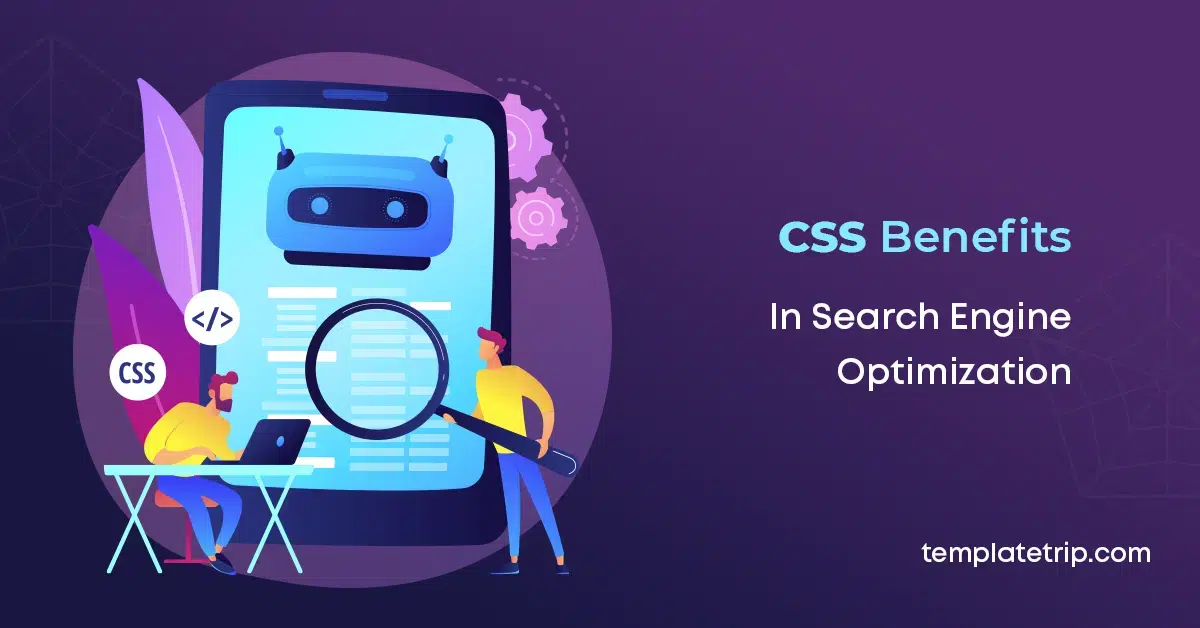
Cascading Style Sheets (CSS) is a styling language used to describe the look and formatting of a website. CSS provides a number of advantages for search engine optimization (SEO), which is the practice of optimizing a website to improve its visibility and ranking in search engine results pages (SERPs). In this post, we will explore some of the key advantages of CSS for search engine optimization.
Table of Contents
- 1 The Advantages of CSS for Search Engine Optimization (SEO)
- 1.1 1. Separation of Content and Presentation
- 1.2 2. Reduced Code Bloat
- 1.3 3. Improved Page Load Speeds
- 1.4 4. Mobile-Friendly Design
- 1.5 5. Easy Maintenance
- 1.6 6. More Control Over Website Design
- 1.7 7. Accessibility Benefits
- 1.8 8. Easy Integration with Other Web Technologies
- 1.9 9. Responsive Design
- 1.10 10. Better Page Ranking with Fewer HTML Codes
- 1.11 11. Improved User Engagement
- 1.12 12. Greater Consistency Across Pages
- 1.13 Conclusion
The Advantages of CSS for Search Engine Optimization (SEO)
1. Separation of Content and Presentation
One of the biggest advantages of CSS for search engine optimization is that it allows for the separation of content and presentation. By separating the presentation layer (CSS) from the content layer (HTML), search engine crawlers can easily parse and understand the content of a website. This improves the readability of a website’s content, making it easier for search engines to index and rank.
2. Reduced Code Bloat
Another advantage of CSS for search engine optimization is that it reduces code bloat. In the past, web designers would use HTML tables to structure the layout of a website. However, this approach resulted in large amounts of code, making it difficult for search engines to crawl and index a website. By using CSS to structure the layout of a website, web designers can create cleaner and more efficient code, which improves the performance of a website and makes it easier for search engines to crawl and index.
3. Improved Page Load Speeds
Page load speed is an important ranking factor for search engines, as it impacts the user experience of a website. By using CSS to style a website, web designers can reduce the amount of HTML code required, resulting in faster page load speeds. This can improve the user experience of a website, as users are more likely to stay on a site that loads quickly, and can also improve the site’s ranking in search results.
4. Mobile-Friendly Design
With the increasing use of mobile devices to access the internet, it is important for websites to be designed with mobile devices in mind. CSS offers a number of advantages for creating mobile-friendly designs, such as flexible layouts, responsive design, and media queries. By using these techniques, web designers can create websites that are optimized for mobile devices, improving the user experience and ranking in search results.
5. Easy Maintenance
CSS provides an easy and efficient way to make global changes to a website’s design. By creating a separate CSS file, web designers can make changes to the design of a website without having to modify each individual page. This makes it easier to maintain a website’s design and ensure consistency across all pages, which can improve the user experience and search engine ranking.
6. More Control Over Website Design
CSS also gives web designers more control over the design of a website, which can have a significant impact on SEO. By using CSS, web designers can create more visually appealing designs that are optimized for both users and search engines. This can improve the user experience of a website, reduce bounce rates, and improve the site’s ranking in search results.
7. Accessibility Benefits
CSS can also improve the accessibility of a website for users with disabilities. By using CSS to separate content and presentation, web designers can create websites that are easier to navigate and use with assistive technologies such as screen readers. This can improve the user experience for users with disabilities, and can also help improve the website’s ranking in search results.
8. Easy Integration with Other Web Technologies
Finally, CSS is designed to work seamlessly with other web technologies such as JavaScript and HTML. This makes it easy for web designers to integrate other SEO techniques into their website’s design, such as using schema markup to improve search engine visibility. By using CSS alongside other search engine optimization techniques, web designers can create websites that are optimized for both users and search engines.
9. Responsive Design
With the increasing number of mobile users, having a website that is optimized for different devices has become crucial. With CSS, designers can create responsive designs that adjust to the size of the screen on which they are viewed. This ensures that the website appears perfectly on any device, from a desktop computer to a smartphone, making it more user-friendly.
The responsive design of a website can have a positive impact on its search engine optimization as Google now ranks mobile-friendly websites higher than non-mobile-friendly sites in its search results. By using CSS to create responsive designs, web designers can ensure that their websites are accessible and easy to navigate on any device, improving the user experience and increasing their website’s visibility in search results.
10. Better Page Ranking with Fewer HTML Codes
CSS can help in reducing the amount of HTML code required for designing a website. This is important because the more code a website has, the longer it takes to load, and page speed is an important factor in SEO ranking. With CSS, designers can replace chunks of HTML code with a single line of CSS code, reducing the size of the website’s HTML files and speeding up load times.
Fast load times are crucial to providing a good user experience, which in turn can improve a website’s ranking in search results. By using CSS to reduce HTML code and improve page speed, designers can make their websites more user-friendly and search engine optimization-friendly, ultimately resulting in higher page ranking.
11. Improved User Engagement
Another benefit of using CSS for search engine optimization is improved user engagement. By providing visually appealing and user-friendly designs, CSS can keep users engaged and on a website for longer periods. This, in turn, can improve the website’s bounce rate, which is another important factor in search engine optimization ranking. When users stay on a website longer, it sends a signal to search engines that the website is relevant, engaging, and valuable to users.
By using CSS to improve the design and user experience of a website, web designers can make it easier for users to find the information they are looking for and increase their engagement with the site. This can lead to more conversions, increased user loyalty, and ultimately higher search engine optimization rankings.
12. Greater Consistency Across Pages
CSS can also help web designers maintain consistency across multiple pages of a website. By creating a set of styles in CSS and applying them consistently across all pages of a website, designers can create a cohesive and professional-looking website that is easy to navigate and use. This consistency can help improve the user experience, reduce bounce rates, and improve the website’s ranking in search results.
By using CSS, web designers can create templates that can be applied to all pages, ensuring that the website has a uniform look and feel. This can help build user trust and credibility, which can lead to improved search engine optimization rankings over time.
Check this: Logo Design Creation by TemplateTrip
Conclusion
In conclusion, CSS offers numerous advantages for search engine optimization. By providing a range of design and formatting options, reducing code bloat, improving page load speeds, creating mobile-friendly designs, providing easy maintenance, giving more control over website design, providing accessibility benefits, enabling easy integration with other web technologies, creating responsive designs, reducing HTML code, improving user engagement, and maintaining consistency across pages, CSS can help web designers create successful websites that are optimized for both users and search engines. By understanding the benefits of CSS for search engine optimization and implementing them in website design, web designers can create websites that are both visually appealing and user-friendly while also being easily found and ranked by search engines.










